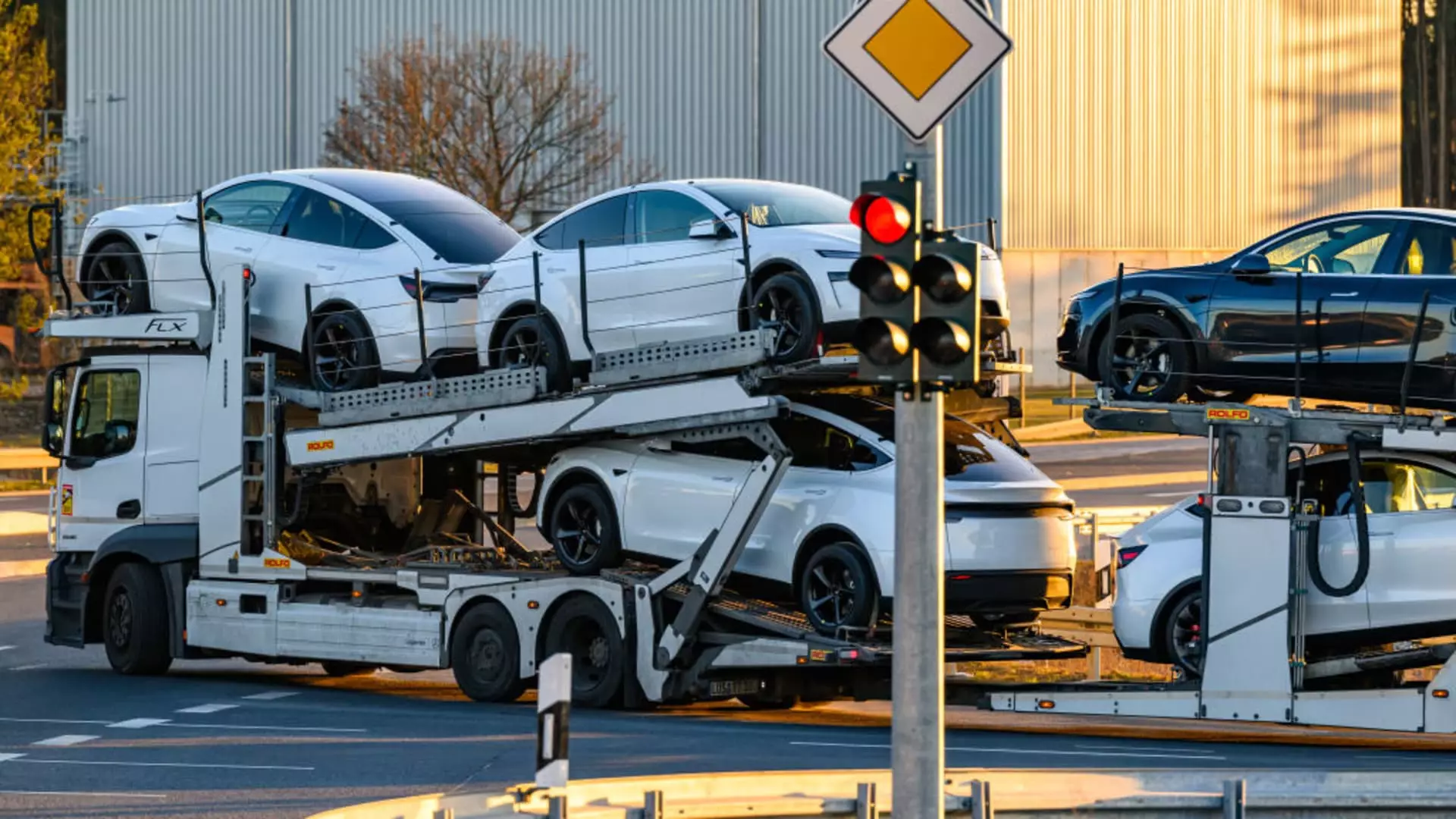Tesla has painted a rather bleak picture for its investors and supporters with its first-quarter deliveries for 2025, reporting 336,681 vehicle deliveries—a staggering 13% decline from the previous year. This data not only marks a notable downturn but signals a potential crisis from which the company could struggle to recover. The projections were dismal, as analysts had anticipated deliveries ranging between 360,000 and 370,000 units. Tesla’s own expectations—communicated through selected analysts—peaked at about 377,590 deliveries, showing just how far off the mark the company was.
This discrepancy raises serious questions about Tesla’s operational strategies and forecasting methods. If they cannot meet basic production and delivery quotas, it indicates a troubling disconnect between the company’s internal assessments and the realities of the market. Furthermore, the reveal that delivery numbers were a disaster “on every metric,” as noted by Wedbush Securities analyst Dan Ives, highlights a crisis more profound than just poor numbers. The very reputation and brand image that once set Tesla apart now seem threatened.
Manufacturing Challenges and Product Updates
Tesla’s production stood at 362,615 units in Q1, which, upon closer scrutiny, complicates any rosy narrative about the company’s market position. The production lines underwent planned shutdowns for necessary upgrades, particularly for the revamped Model Y SUV—an indication that innovation, while crucial, is becoming a double-edged sword. If advancements compromise current production capabilities, how long before expectations fall entirely apart? Elon Musk himself predicted the Model Y would reclaim its title as the best-selling car globally, but given these setbacks, such optimism feels increasingly misplaced.
The emphasis on the Model Y can distract from an essential issue: diversification. Tesla’s reliance on its flagship models renders it vulnerable to market fluctuations and emerging competitors. With the rise of rivals—specifically other electric vehicles (EVs) that are challenging Tesla’s dominance—focusing solely on this one model might strategically backfire.
The Reputational Fallout
The challenges extend beyond production numbers; Tesla’s reputation is taking a noticeable hit. As the company’s CEO is embroiled in controversial political arenas, Musk’s actions are increasingly in direct conflict with Tesla’s brand values. His involvement in initiatives such as the Department of Government Efficiency has drawn ire both domestically and internationally. In particular, his recent attacks against inclusivity and social justice initiatives have created a climate of unrest and backlash against the brand.
Waves of protests and boycotts have emerged in response to Musk’s incendiary political rhetoric. When an individual whose image is so intricately tied with a brand’s identity consistently courts controversy, the effects can be devastating. It doesn’t merely tarnish Tesla’s reputation; it jeopardizes sales, turning potential customers into critics.
Market Share Woes: A Global Perspective
On a global scale, Tesla’s declining market share is a significant concern. In Europe, it plummeted from 17.9% to 9.3%—a staggering 8.6% drop just in one year. In Germany, a country regarded as a beacon for automotive excellence, sales fell sharply. The decrease from about 16% to 4% in the battery electric vehicle segment not only highlights gradual loss of consumer trust but also showcases the growing competitiveness of local manufacturers.
The figures from China would make any entrepreneur uneasy; sales in the region stagnated at 78,828 in March, an alarming 11.5% slump from previous years. The rising influence of alternatives, such as BYD, poses a serious challenge, as they cater better to regional preferences and price points. Tesla’s inability to adapt to this formidable competition may lead to a further decline, both in sales and brand loyalty.
A Rocky Road Ahead
Tesla’s stock also bore the brunt of these operational turmoils, witnessing a steep 36% drop in Q1—the most significant decline the company has faced since late 2022. This not only raises concerns about Tesla’s current financial health but also reflects a shaky investor sentiment that could take years to rebuild.
It’s evident that Tesla is at a crossroads, and the implications of this quarter may reverberate throughout the remainder of 2025 and beyond. Musk might have secured his position as the wealthiest individual on the planet, but his strategic missteps and volatile political engagements may end up costing the future of Tesla, an institution that was once considered the gold standard for electric vehicles. The road ahead is challenging, and it remains to be seen whether Tesla can navigate the myriad pitfalls that now lie in its path.

